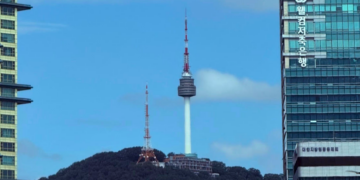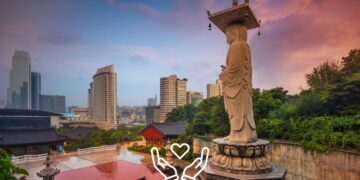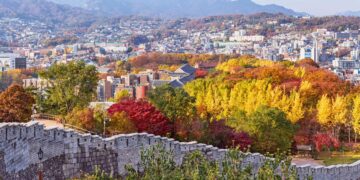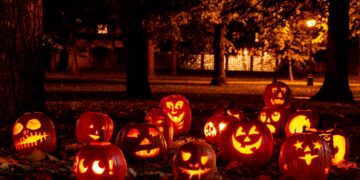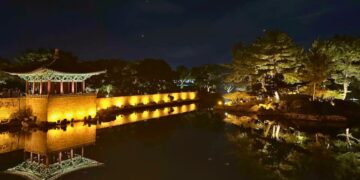Last Updated on 2 years by admin
South Korea is a rapidly progressing country. With the sprawling metropolis and new age technologies, it has everything to boast of. But at its heart, it is a country steeped in antiquity and culture. Korean history dates far back centuries. South Korea has seen many rulers, from the ancient Silla and Joseon Kingdoms, the Japanese invasion, and Military governments. That was until the Partition, and South Korea finally became a Republic. A country’s story lies in its history, and it is frozen in its monuments.
The Best Historic Places in South Korea for the Culture Aficionado
Here are some of the best Historic Places in South Korea that you must visit for an authentic taste of history.
Ancient Palaces for the Aura of Royalty
Changdeokgung Palace
It is among the five most magnificent royal palaces of South Korea. Built in the Joseon Era, it is set at the foot of the Baegaksan mountain in Seoul. The entire palace complex is well-planned with awe-inspiring architecture. You can avail of a guide for a tour across the complex.
The beautiful buildings, large gates, and luxurious halls will hold you in a time warp. During Spring, the complex is surrounded by cherry blossoms, and it is one of Seoul’s prettiest places.
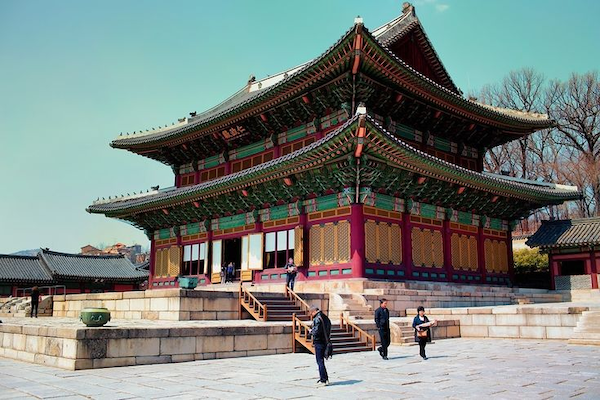
This palace is famous for the Huwon, a secret garden. It is a place of calm with immense natural beauty. The pond (Buyongji), surrounded by trees, has a charm of its own. That is why a tour of this place is limited, so you should grab your tickets beforehand.
This palace has suffered Japanese invasions back in the day yet continues to remain a wonderful example of Korean culture and history.
Read More: Changdeokgung Palace (창덕궁) and Huwon, The Secret Garden
Gyeongbukgung Palace
This Palace is the largest and the main among the Five Palaces. Not too far from the Changdeokgung Palace, it used to be the main quarters for the royal family before the Japanese invaded.
No matter how many times it has been destroyed, the palace rose from the ashes and stands tall even today. King Taejo of the Joseon Dynasty built Gyeongbukgung Palace. One major attraction of this palace is the guard changing ceremony held every day at the Gwanghwamun, the main entrance gate.
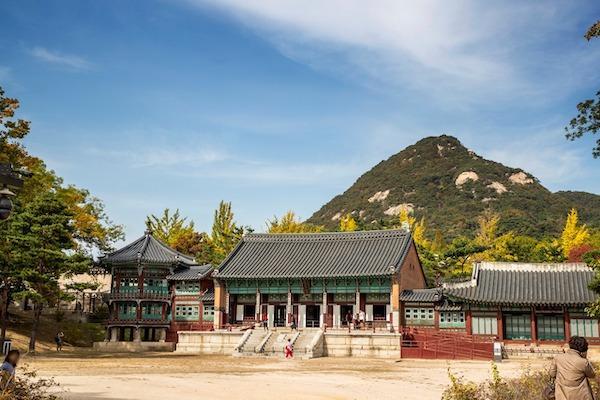
Gyeongbokgung Palace architecture encompasses stunning ornate gardens, buildings, pavilions, and entrance gates. Most of them recently reconstructed, eloquently narrate the tales of a bygone era. Do not miss the main palace building Geunjeongjeon, the splendid pavilion Gyeonghoeru, Amisan, the terraced garden, and the residential chambers.
For a novel experience, you can try the Starlight Tour, which is a night tour across the complex. It includes live music performances and sampling authentic Korean cuisines with a modern twist.
Read More: Gyeongbokgung Palace – Korea’s Magnificent Main Palace
Dwell in the Tranquility of Timeless Temples
Bukguksa and Seokguram Grotto
Located in Korea’s “Museum without Walls,” Gyeongju, this UNESCO World Heritage Site, is one of a kind. These are different monuments, but you should not miss visting them.
Both of these spots are major cultural landmarks in South Korea and Buddhist architecture. Every year, thousands of pilgrims and tourists flock to these sites.
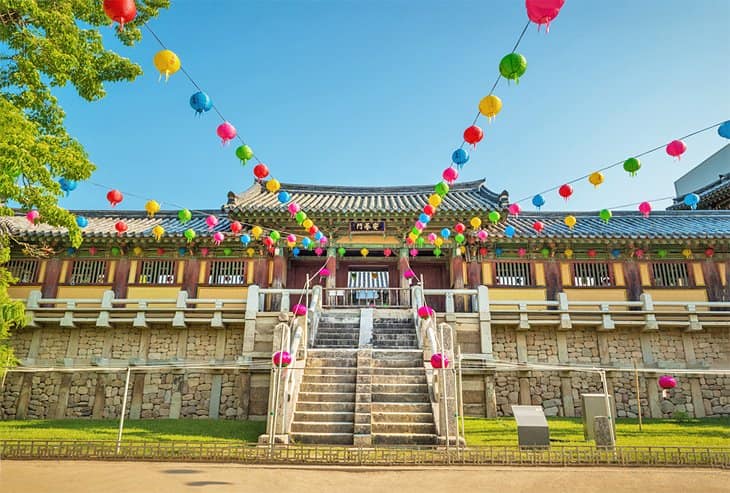
Bulguksa temple dates back to the Silla era. It houses several National Treasures of Korea like the Dabotap and Seokgatap stone pagodas. The complex is a must-visit as it stands among the best historical places in South Korea.
The large statue of Lord Buddha in the Bhumisparsha Mudra position dwells in Seokguram Grotto. Just a few kilometers away from Bulguksa, you can reach the complex by bus or a hike.
It is the 24th UNESCO heritage site, set on T’oham Mountain. This place encompasses mystery and spiritualism in the exceptional murals, sculptures, and Bodhisattvas.
Jongmyo Shrine
Built during the Joseon era, Jongmyo is a Confucian shrine in Seoul. The spirit tablets of rulers of the Joseon dynasty dwell here.
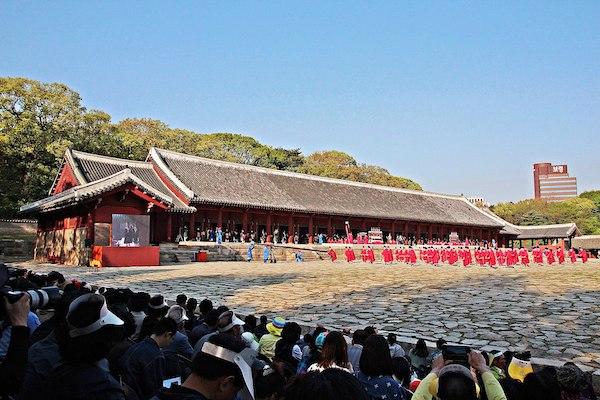
There are two shrines: Jeonjeong, the main shrine, and the smaller Yeongnyeongjeon. This Shrine holds immense historical importance as the tablets of Joseon rulers. Therefore it is not displayed to the public. However, the annual Jongmyo Daeje ceremony held in May is a significant event. It is a yearly celebration of the ritual in memorial of the Joseon rulers. It is the world’s oldest complete ceremony.
Observe Classic Korean Life at Traditional Villages
Bukchon Hanok Village
Located close to the Changdeok, Gyengbuk Palace, and Jongmyo Shrine, Bukchon is a traditional village you cannot miss. Here is your perfect itinerary for the best historical places in Seoul, South Korea.
This traditional village brimming with hanoks or ancient Korean houses dates back to the Joseon times. It has grown into a significant cultural area of Seoul.
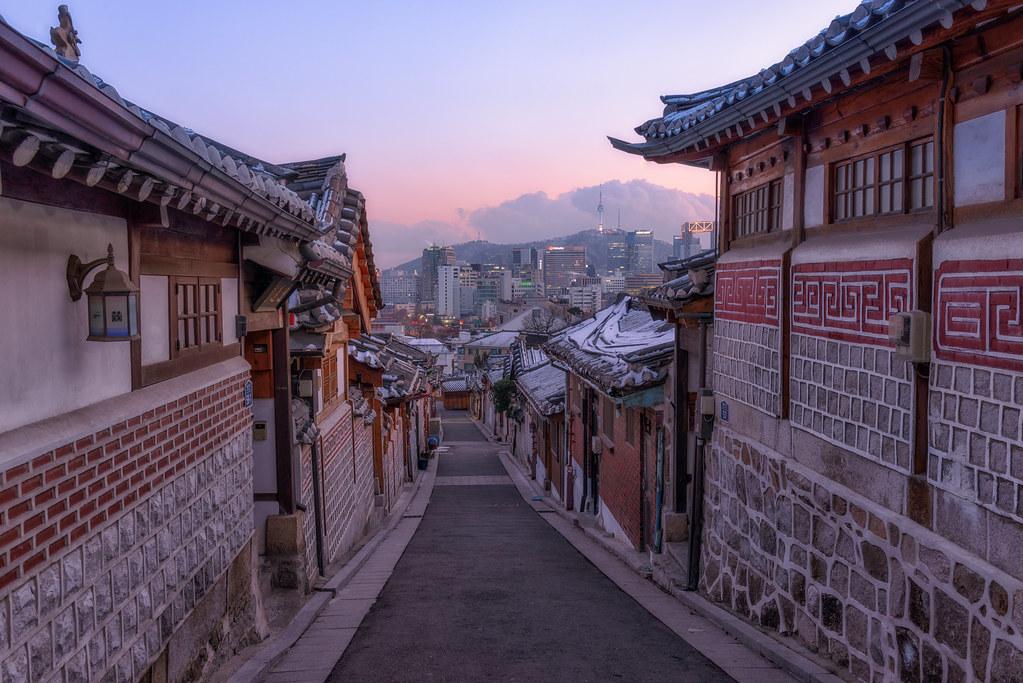
It encompasses guesthouses, restaurants, traditional homestays, and tea houses. This wonderful village allows you to understand, learn, and fall in love with traditional Korean life.
Not everything about this village is ancient. With the changing times, Bukchon has seen a seamless blend of the old with the new. Walk through the narrow winding alleys, explore exciting art galleries and ancient monuments, sit for lunch at a fine dining or a traditional cuisine restaurant, your call!
You can chance upon handicrafts workshops of artisans keeping the age-old arts alive. The hustle of normal daily lives, children playing, and homemakers doing their chores blend with the cultural aura.
Treat your eyes to the never-ending list of the best historic places in South Korea!
Check out other must-read articles from KoreaTravelPost:
- 20 Must-Visit Places in Seoul
- A Solo Woman Traveler’s Complete Guide to Korea
- Go on A Historical Adventure in South Korea – Things To Do in Gyeongju
- Best Pyeongchang Ski Resorts and Tourist’s Guide



